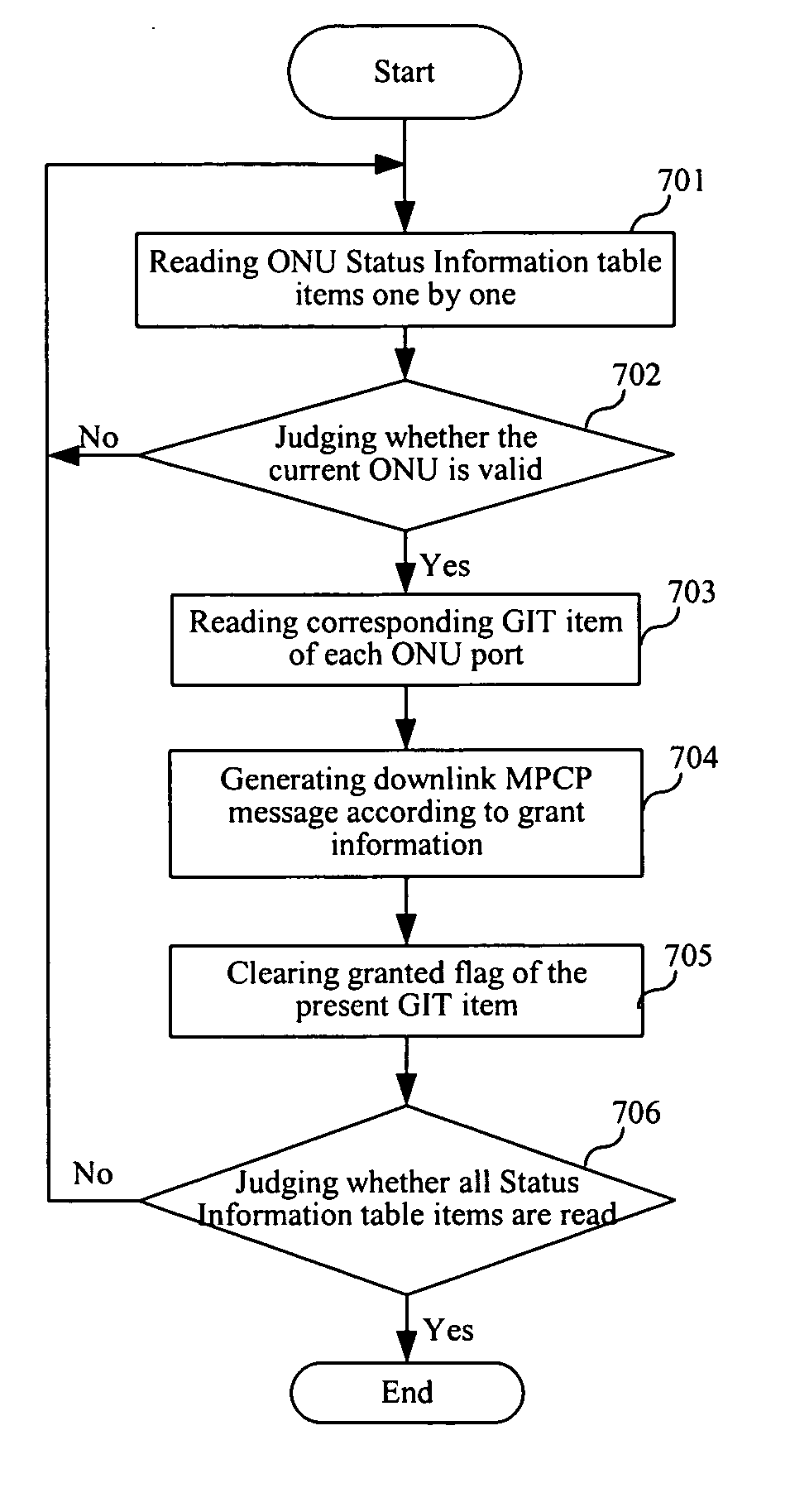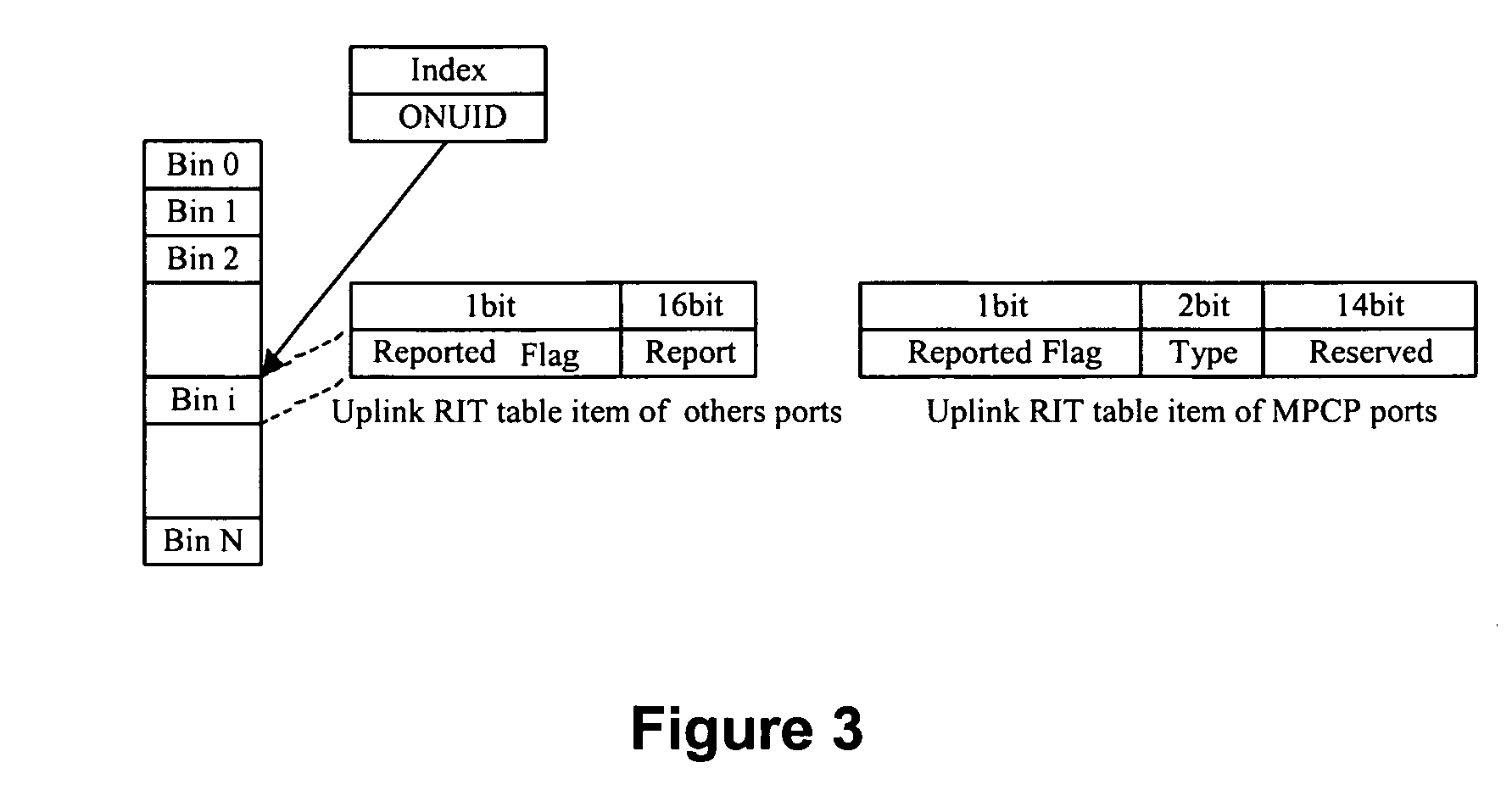Method for dynamic bandwidth allocation in passive optical network
- Summary
- Abstract
- Description
- Claims
- Application Information
AI Technical Summary
Benefits of technology
Problems solved by technology
Method used
Image
Examples
Embodiment Construction
[0077] To clarify the object, technology scheme and advantages of the present invention, the present invention will be described in detail with reference to the attached drawings.
[0078] In the present invention, a method of dynamic bandwidth allocation in Passive Optical Network is put forward. This method comprises service registration, bandwidth allocation, granting message generation and ONU information aging, etc. Firstly, different services are classified in sequence of priority and given different data structure so as to perform different allocation strategies. When allocating bandwidth, different service ports accessed to the same ONU are distinguished in terms of different service types and processed separately by allocating corresponding window size; when generating granting messages, different service ports accessed to the same ONU are processed collectively, start time of data transmission is assigned, in this way granted windows of different service ports accessed to th...
PUM
 Login to View More
Login to View More Abstract
Description
Claims
Application Information
 Login to View More
Login to View More - R&D
- Intellectual Property
- Life Sciences
- Materials
- Tech Scout
- Unparalleled Data Quality
- Higher Quality Content
- 60% Fewer Hallucinations
Browse by: Latest US Patents, China's latest patents, Technical Efficacy Thesaurus, Application Domain, Technology Topic, Popular Technical Reports.
© 2025 PatSnap. All rights reserved.Legal|Privacy policy|Modern Slavery Act Transparency Statement|Sitemap|About US| Contact US: help@patsnap.com



